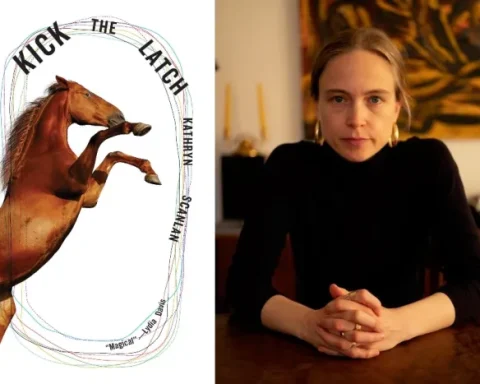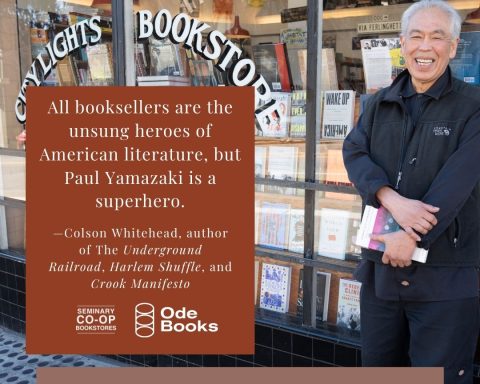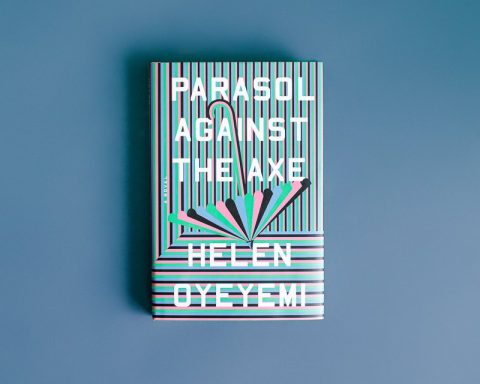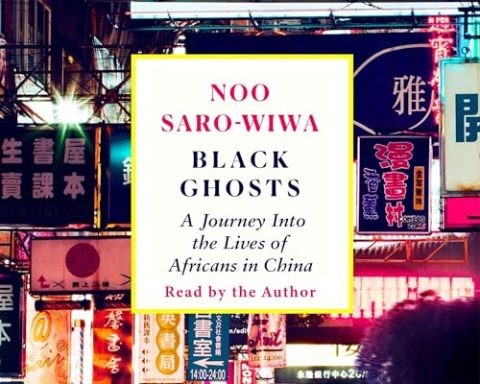IN CONVERSATION:
VULNERABILITY AS CRITICAL SELF-KNOWLEDGE
ERNESTO PUJOL with Thyrza Nichols Goodeve
The art of Ernesto Pujol is like breath. The kind of breath we have so little of these days. It is what makes his work so vital. His medium is the body, his strategy stillness, his method listening. He has been performing since the 1990s and works from a biography like few contemporary artists. He spent four years as a cloistered monk in the order that Thomas Merton belonged to in the middle of the 20th century: the Cistercians of the Strict Observance, originally a French order, commonly known as Trappists. When he entered he planned to remain vowed for life. Take a moment to imagine this. He has also lived, not just worked, among the homeless, and as a performance artist writes with honesty and clarity in his book Sited Body, Public Visions: silence, stillness & walking as Performance Practice.
His early October performance, a 24-hour group performance called “Time After Us” was commissioned by the French Institute Alliance Française as part of FIAF’s Crossing the Line Festival 2013.
For this issue, Guest Editor Thyrza Nichols Goodeve sat down with Pujol to discuss his performance practice in terms of what he calls “vulnerability as methodology.”
No wound ever speaks for itself. The only thing that you will find emerging spontaneously from a wound is blood. If you’re interested in the deeper significance, then wounds have to be read. They have to be interpreted and deciphered. Vulnerology, or the science of wounds, is the activity of this interpretation.
—Display Wounds, Ruminations of a Vulnerologist, Gregory Whitehead
Thyrza Nichols Goodeve (Rail): I wanted to discuss the theme of vulnerability with you because in your book Sited Body, Public Visions, you describe it as a methodology. I love this idea of vulnerability as a methodology, as a kind of work or strategy. But before we go on, what is vulnerability? The etymology of the word is derived from the late Latin vulnerābilis, wounding, vulnerāre, to wound, vulnus, vulner-, wound.
Ernesto Pujol: There is a difference between being fragile and being vulnerable. Being fragile is being insubstantial, easily damaged, or completely broken, sometimes permanently. Vulnerability consists of a critical self-knowledge, which acts as the solid ground for generous listening toward a compassionate creativity. Vulnerability is part of true intelligence.
Rail: Two things you say strike me as important: vulnerability as “critical self-knowledge” and the idea of “generous listening.”
Pujol: Vulnerability is the door to wisdom, but the key to that door is listening with generosity. To listen to everyone and everything; to make the time to listen and have the openness to listen—constantly.
Rail: Would you expand on your idea of “compassionate creativity?”
Pujol: Compassionate creativity is about generous inclusiveness during a project process, inviting as many individuals and institutions as possible to contribute to a project’s evolution. For instance, I have worked extensively in the Midwest, an area that is often dismissed as too conservative. When I have worked in Kansas and Utah, it has been as important to listen to Republican and Evangelical individuals, to farmers who do not believe in organic farming, to cattle ranchers, hunters, and Mormons, as to the more progressive. It is an invitation for all manner of issues to inform the construction and coding of meaning. However, it only works as a psychic riverbed if you have clear project goals, in terms of a template for achieving a vision.
Rail: What is vulnerability as a method?
Pujol: It is an overall philosophy of never wearing an armor, of walking into each and every project psychically naked, so as to understand a people and a place through all my senses.
After this embodied psychic research, in the Jungian sense, I generate an Open Call, inviting all, avoiding elitism by trusting strangers and institutions. Instead of starting guarded, suspicious, having people earn my trust, I trust everyone and everything outright. I am the one who has to work to earn their confidence.
I lead a fully transparent process where all space negotiation meetings are open to confirmed participants, and all relevant research, such as historical documents, are available. I want them to know as much as I know, or more. We are each others’ teachers. I tell them my concerns, worries, fears, nightmares. I tell them my hopes, dreams, aspirations. I listen to theirs. But it is not a flood that lacks appropriate boundaries. It is quiet and formal, a strong creative intimacy.
Ironically, the greatest site of my vulnerability as the project peaks is not some sort of ongoing “confession,” but my handling of authority. I am entrusted with tons of authority, and I acknowledge and manage it through my known strengths and weaknesses. As I said before, critical self-knowledge is the basis for vulnerability. However, we live in a society of increasingly false multiple selves, so self-knowledge is harder to achieve than ever. Yet, we cannot be vulnerable unless we truly know ourselves. Otherwise, we are simply fragile.
Rail: When did you first begin to use vulnerability as a method?
Pujol: I started out as an installation artist in the 1990s, after being a cloistered monk and a social worker, which I consider a crucial part of my interdisciplinary art practice formation. I travelled to Cuba in 1991 to begin a series of public art projects in Havana. Working with that communist bureaucracy and poor island families, with gatekeepers and stakeholders, with no resources, taught me to become vulnerable.
Rail: What extraordinary experience you bring to making art. Was art a part of your childhood? Or was it a response to your life as a monk, and later, as a social worker?
Pujol: I was a child artist. I spent my childhood drawing and modeling clay. I thought I would be a psychologist but switched my major to fine arts. After completing an undergraduate degree in humanities and traveling through Western Europe, I entered an abbey with the Cistercians of the Strict Observance, originally a French order, commonly known as Trappists. Thomas Merton was their best-known writer in America during the mid-20th century.
Rail: How many years were you in the monastery? When you entered did you think you were entering for life?
Pujol: I spent one year in a seminary studying philosophy and theology, followed by four years of cloistered silent monastic life with the Trappists, studying mysticism, followed by two years of “missionary” work in a Catholic Worker community founded by Dorothy Day, the American journalist, and Peter Maurin, the French anarchist, during the Great Depression. I entered the monastery planning to spend the rest of my life inside. But I left four years later, and everything has been an unplanned adventure since then.
Cloistered monastic life remained quite medieval until recently. It gave me an amazing formation. Part of that was a form of death to the self, seeking to become an empty vessel. Emptiness is the ground for listening. I arrived to New York directly from the monastery. I had to learn how to talk again after years in silence. During those first years back in the world, I began to live and work among the homeless, followed by serving people with AIDS. I sought to rid myself of remaining fears. My performance practice was formed through those intense experiences.
Rail: You spent two years living with the homeless. Is that where you began to understand the strength of “radical vulnerability?”
Pujol: My belief in and practice of vulnerability as a working method stems from a cumulative set of experiences that gradually took me to that conviction. There are peers with whom I have been forced to fight over principles. I am sure that they do not think me vulnerable. They only think me strong. Because ego reads ego into everything; it is a perverse filter that perceives and explains all as flexing muscle. I do not know if I am radical. I always thought that artists were supposed to live this way.
Rail: What do you say to those who say vulnerability is a weakness?
Pujol: People invested in being powerful shun the word. They consider it synonymous with weakness. It is a women’s word, a gay term, an intellectually suspect approach, related to poor mental health. It is a loser’s position. There is a prejudice that only the disempowered appeal to vulnerability because they have no other resource to draw from. I am not afraid of being weak. I cannot imagine life without moments of faltering, through exhaustion or mistake. I have made plenty of mistakes, for lack of information, or impatient passion. The only space where there is no weakness is in science fiction, among cartoon characters. I am real.
In terms of public vulnerability, of vulnerability as a sustainable practice, one has to be willing to be considered a countercultural fool, to confront an endless string of embarrassments that may be considered social and professional suicides. One has to be willing to die many times in the opinion of the powerful, who misunderstand our goals and their reasons, because they always underestimate our agency.
Rail: This notion of being willing to play the fool is very important. In her book Stupidity, Avital Ronell explores various permutations of stupidity: the idiot, the imbecile, the fool, the buffoon. She says “stupidity is […] linked to the most dangerous failures of human endeavor.” It is also “that which fatigues knowledge and wears history down.” I consciously play the fool sometimes as an art writer who never formally studied art history by maintaining a position of naiveté, of the amateur, or of being an outsider. It is a strategy meant to disarm the pompous expert.
Pujol: I have often met young professionals who wish to be vulnerable but are slowly deformed by power, eventually becoming unrecognizable. They turn around, watch us still working in the trenches, laugh at how we remain there, and consider us losers. I can only continue to kill my ego (which has to die a thousand deaths), practice detachment, and wish them insight over time.
Rail: True, I think of the emphasis, especially among politicians, of refusing to admit mistakes when the great thinkers and teachers are those who admit when they are wrong and who learn from their mistakes.
Pujol: I think that the opposite of vulnerability is fear, which is covered, dressed, in arrogance. I think the arrogant are fearful. I cannot live in fear. I know that we need a new language, that we seek new terms or the qualification of old terms like vulnerability, creating intelligent oxymorons that make us stop and reflect. But I am at peace with simply saying I am vulnerable. I believe that being vulnerable not only takes courage and trust, but also great character. There is a difference between ego and character. Character is the agency of enlightenment in the world, pushing messages out.
Rail: In this sense vulnerability is connected to learning. You are a gifted teacher. Can you teach vulnerability?
Pujol: The best educators and writers I know are vulnerable. My mother was a very progressive teacher in the Caribbean. She had three masters degrees: in guidance counseling, education, and school administration. She single-handedly integrated her white private school, accepting mulatto and black students for the first time. They called her “the niggers’s principal.” She developed a curriculum based on social values that permeated every subject matter. She is now 80 years old, retired and widowed, living alone. But she retains a large following of former young women teachers whom she mentored. My old mother is a giant.
Rail: I know you have thought about developing a program in performance. How would you envision it? Why do you think it would be important? How would it differ from other programs? In a way, I am asking you what your notions of performance are—how far do you extend the boundaries? What kind of courses would you offer?
Pujol: My performers have often asked me to start a program, an institute, or a performance school. With that in mind, I founded The Field School in 2010, turning every project into a training experience for art students and young professional artists. However, my Field School has no office, no real estate, no budget. It is like a tent that appears, disappears, and reappears according to the performances I am commissioned on different sites.
I am now increasingly interested in chairing or directing a program through an art school or university. There are graduate programs in performance studies and in the performing arts, in theater and dance, but there is no graduate program in performance in the U.S. Marina is developing her institute to teach her method. I support that and would be happy to teach there. But ultimately, I am interested in all methods, in all performative traditions. I would head a program that consists of collaborations with numerous performers, very different from each other, offering students a richer menu. However, I would still seek a socially relevant menu, whether intimate or public, and a vulnerable protocol. Vulnerability as methodology would still guide us.
Rail: In the arts, an artist who works with “radical vulnerability” is Alfredo Jaar. His Rwanda Project: 1994-2000 is profound precisely because it affected him so totally, to the point where he couldn’t make work or didn’t know how to represent the horror because it was unrepresentable. Yet it must also be witnessed so he hid the photographs in boxes. In this way, what happened is there, it is not denied, but it is not used as spectacle or sensation, or even as polemic. I am curious what work affects you. When has a work of art taught you something via making you feel vulnerable?
Pujol: All great art is vulnerable. I believe it was Walter De Maria who said that a work of art should have at least 10 different meanings. Art should be vulnerable to diverse interpretations, to the fullness of the human condition.
Vulnerability is an essential part of the creative process. I understand the creative process as a completely permeable journey that begins when one is in a state of total receptivity.
Rail: How did you learn this? Or better, when did it start being part of your practice as an artist?
Pujol: Sadly, I did not learn this in school. Although school taught me not to try to be successful, but to try to generate meaning, metaphors that captured the state of the human condition during my current life. So, it was the field that taught me about vulnerability. Working with landscape, working with people taught me this. People were vulnerable and because I listened to their vulnerability, it was contagious. And then, I discovered that my vulnerability, in turn, opened doors; my vulnerability made others unguarded. They lowered their armor and became vulnerable with me.
Rail: Could we talk about a history of vulnerability?
Pujol: There is a history of vulnerability, of known and unknown heroic humble individuals. There is my mother, one of the greatest educators of the Caribbean region. She was brilliant and vulnerable. She knew, but listened to learn more. Yet no one will ever write her biography. She will only be remembered by her son. And then, there is someone like Orhan Pamuk in Turkey, a Nobel Prize novelist. The world believes it knows him. He is vulnerable in spite of his traditional masculinity. His ancestral melancholia makes him vulnerable; it gives him a quiet strength that is admirable. I was just in Turkey, performing at Istanbul Modern, and I visited his Museum of Innocence. I like how he embodies cultural resistance in “unimportant” daily objects, pointing to human detritus as the site for holding on to historical memory against its current erasure by conservative forces. It is a fierce humility. The vulnerable are humble.
Rail: How did you prepare for the performance in Turkey? It was right after the protests at Taksim Park, as the protests spread to other cities.
Pujol: I studied Byzantium, particularly its iconography. I read Rumi’s poetry and Pamuk’s Istanbul. I began training the Silsila Collective performers in Istanbul during May, as the unrest was bubbling. We then travelled and staged a public piece at the Piazza San Marco in Venice. We were scheduled to perform a second piece back home at Istanbul Modern in June, but the museum suspended all its events due to street violence. It was not safe for performers or audiences. Several weeks later, the institution contacted us, placed the performance back on their calendar, and I returned to Istanbul to continue training.
Nevertheless, we had to cut parts of the performance, which had originally included walking throughout the city before and after our gestures inside the museum. An aggressive police presence prevented us. Artists have played an important creative role in the protests, and the increasingly conservative undemocratic government has accused them of being part of an international conspiracy. So, artists are particularly under surveillance and attack.
In addition, every gesture we did inside the museum had to be reevaluated against the political gestures that were being performed on the streets. We wanted to refer to the streets poetically, without being literal. Our performance mourned the violence that was going on, the losses, offering a place of mourning, release, and rest.
Rail: Please describe the performance you are doing in New York in early October. Where is it? What inspired it?
Pujol: The performance is called Time After Us. It will take place at Saint Paul’s Chapel on Wall Street. It is a durational performance that begins at 10:30 a.m. on Thursday, October 3, unfolds for 24 hours, nonstop, and ends on Friday, October 4, at 10:30 a.m. We will walk a circle backwards, becoming vulnerable, unable to see where we are going; and we will flow counterclockwise, as if seeking to undo the passage of time. During the first half, its first 12 hours, one new performer will enter every half hour, their entrance marked by the ring of a small bell, until we are 24 performers by 10:30 p.m. As of that point, we will be a community that walks together. The piece was initially commissioned by the festival curators as their response to hurricane Sandy, to witnessing the communal response to adversity. But I have added the element of collective portraiture, of portraying the life and times of 21st-century New Yorkers.
Rail: What does it mean to walk backward? What happens?
Pujol: Walking backward is countercultural, in terms of the forward-driven culture of capital achievement; it instantly places the body in a vulnerable position. And it is a wonderful metaphor for second chances, for revisiting the past, our past. It gives us a chance to forgive and be forgiven, to say “I’m sorry” and perhaps hear someone lost say it to us; to apologize and be apologized to. I like to believe in redemption. I cannot tell what is happening in the mind of my walkers, but I use this exercise as part of my practice, to release and be released.
Rail: How is the preparation different for New York than for your performances in the American Midwest or in Istanbul?
Pujol: The preparation in New York has required just as much coordination as anything I have done elsewhere, but of a different kind, because everyone is very busy, very fast, very invested in achieving something great. So, the training and performing are demands among competing demands. It has also been challenging to get people to slow down, stop, be silent, listen, and reflect. Many wanted to arrive late and leave early to and from the trainings, to just drop by. But my trainings are retreats from speed and noise, they are immersions in slowness, so I had to be very disciplined, to teach discipline. And I have had to discern who is doing it as a career opportunity, and who realizes that this is not about that; it is not a spectacle. In fact, the performance seeks to be unspectacular. So, I have had to protect something from show business.
Rail: You perform for 24 hours. For those of us who can’t imagine such discipline, can you tell us what it is like? What stages you go through?
Pujol: The body, the heart, the mind, and the human spirit go through many stages when they surrender to such an experience. There can be an initial rush, or a moment of panic. There can be a march into it, or a jump head-first into the intangible waters. There is mind and no-mind, thought and the elimination of thought, self and no-self, passion and no feeling. It can be boring, mechanical, like manual labor. It can be inspiring, over and gone before you know it, or a great relief when approaching the end. It is like life, a real day, real time, filled with chapters, with contrasting moments. And it is also a pilgrimage somewhere. The body goes nowhere and somewhere.
Rail: By the time this is published, Time After Us will have taken place. What do you hope will be its effect?
Pujol: My work engages silence, walking, and stillness as performance practice. Combined, they created deep gaze and full presence, first for the performers, and then for the audience. I seek to provide audiences with space for reflection. What they reflect about is up to each individual. But I do believe that we Americans are being kept totally distracted from the real issues shaping the nation and the world. We are being kept totally distracted from our true selves. We need time and space to remember where we come from, to consider what we have become, and discern where to go from here. I offer the Wall Street community such a moment.
CONTRIBUTOR
Thyrza Nichols Goodeve
Goodeve is a writer and interviewer active in the field of contemporary art and culture.










Dear Funmi Tofowomo Okelola,
Indeed, “In the absence of greatness, mediocrity thrives.”
Therefore, for starters, many, many thanks for the latest feature from your goldmine Cafeafricana “ IN CONVERSATION VULNERABILITY AS CRITICAL SELF-KNOWLEDGE ERNESTO PUJOL with Thyrza Nichols Goodeve.”
What’s said in that discussion is truly impressive. In this African day and age in which some people – some people who believe themselves to be great ( just because they have been awarded cum laude all the diverse degrees that can be awarded by Harvard & Yale) also believe that little people (ignoramuses like myself) are therefore not entitled to have an opinion about anything whatsoever. (Not even Beniko Popolipo can tell me that – he has his sembene and other people – no matter how eclectic, have their own sembene and that includes yours truly).
Pujol’s is the kind of humility and understanding that is so infrequent – after all, the midas touch can be and is, also a curse, almost as bad as Medusa’s.
Of particular value ( just to isolate a single point) the insight about “generous inclusiveness” the willingness to give ear to diverse points of view and the “vulnerability”, not necessarily a matter of being or not being thin-skinned, the vulnerability of “walking into each and every project psychically naked, so as to understand a people and a place through all my senses” is sufficiently difficult in and of itself – to divest oneself of pre-conceptions/ and pre-conditions as a starting point – is almost impossible (unlike being physically naked which of course should not be equal to theory without practice and which is akin, like a twin to negative capability…
I started to watch this without preconditions…
About generous inclusiveness one remarks that the only place in the Quran al karim in which the Prophet of Islam ( s.a.w.) is criticised in Surah Abasa “ // “He frowned “(the details are self-explanatory)
Also, thanks to you (and him – I mean Pujol) ) I am now a little more familiar with who the trappist monks are. Of course I have always held Thomas Merton, an icon to many, in very high esteem, since about 1972 or thereabouts ( I almost said, “ since Jesus was a little boy”) and believe it or not, more importantly, last night we ( a party of twelve people) had dinner at maybe the best Japanese restaurant in town in celebration of my grandson Malcolm’s mother being awarded her doctor’s degree in medicine and thereafter we the grandparents just the four of us, took off to a site in Stockholm known as Monk’s Café & Brewery at Wallingatan 38 and that’s where we sampled some Trappist Monks Beer a rare exception on last Sabbath’s night.
I hope that you are having a nice time
Cornelius
We Sweden